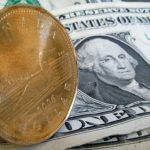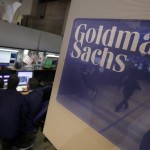British pound was trading higher against the US dollar on Friday, following a report, which revealed UK economy expanded at the fastest pace in three years during the third quarter of 2013.
GBP/USD climbed to a session high at 1.6246 at 4:30 GMT, the pairs highest point since October 23rd, after which consolidation followed at 1.6212. Support was likely to be received at October 20th low, 1.6167, while resistance was to be met at October 23rd high, 1.6257.
Earlier on trading Friday according to preliminary data, the economy of the United Kingdom expanded at the fastest pace during the past over three years in Q3 2013, as this might be considered as an indication that recovery, which has already started earlier in the year, was probably gaining momentum. Nations Gross Domestic Product rose 0.8% during the third quarter compared to the second three months of the year, when overall economic activity increased 0.7%. This result came in consonance with analysts projections. The quarterly GDP figure appeared to be the strongest since the second quarter of 2010, as back then economy grew 1.0%. Countrys annual GDP rose 1.5% in Q3, also meeting expectations, following the 1.3% advance in Q2. Despite this higher pace of recovery, however, UK economy needs to continue strengthening in the upcoming quarters in order to compensate the losses, caused by the financial crisis five years ago.
“I would still be a buyer but not as aggressively as a few months ago when the data was unequivocally good,” Steve Barrow, head of Group-of-10 research at Standard Bank Plc in London, said about the sterling, cited by Bloomberg News. “The U.K. GDP data was in line but the breakdown is reasonably good.”
In addition, the yield on UK benchmark 10-year gilts rose to 2.64%. The yield rate dropped to 2.59% on October 23rd, reaching the lowest level since August 27th, while it is 8 basis points lower since the end of last week.
In the mean time, expectations arose that the Federal Reserve Bank will probably maintain the current pace of its stimulus program at the upcoming meeting on policy on October 29th-30th, especially after the recent string of disappointing economic data, released out of the United States. The Department of Labor reported that the number of people who filed for unemployment assistance in the US dropped by 12 000 to reach 350 000 during the week ended on October 19th 2013. Preliminary estimates pointed that the number of initial jobless claims will drop to 340 000, while preceding week’s results have been revised up to 362 000 from 358 000 previously. This data followed the non-farm payrolls report on Tuesday, as it said that the private sector added fewer than expected job positions in September.
Also, it became clear that US manufacturing activity increased at the slowest pace during the past one year in October, as factory output contracted for the first time since the fall of 2009. Markit Economics said, that the preliminary value of the manufacturing PMI decreased to 51.1 in October, reaching its lowest level since October 2012, as in September the PMI stood at 52.8.
Elsewhere, the pound was steady against the euro, with EUR/GBP cross ticking up 0.02% to trade at 0.8522 at 10:50 GMT. Private sector loans in the Euro zone continued to decrease in September, which implied that recovery in the region might remain fragile, despite the most recent signs of revival. According to data by the European Central Bank, private sector lending decreased 1.9% in September on annual basis, following the 2.0% drop in August. Weaker lending is another confirmation of the current loose monetary policy by the central bank, as the institution has already pledged to maintain the benchmark interest rate at low levels for an extended period of time. According to experts, however, blocs recovery would not likely gain strength, if private sector lending does not increase.
GBP/JPY pair was down 0.09% on a daily basis to trade at 157.50 at 10:52 GMT. All in all, the sterling has gained 3.3% during the past three months, or the best performing currency among the 10 developed-nation currencies, which are tracked by Bloomberg Correlation-Weighted Indexes. The euro has risen 1.9% during the same period, while the US dollar has depreciated 2.5%.





